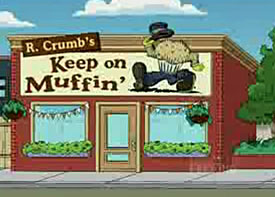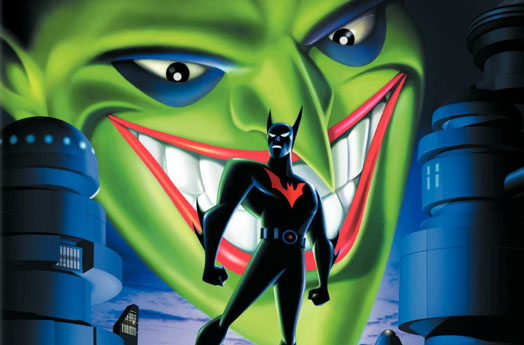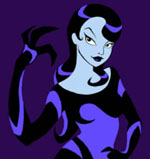Lessons from Milt Kahl. Animator and director Brad Bird was mentored by Disney Legend Milt Kahl “For me, it was like an actor getting to work with Olivier or Spencer Tracy,” remembered Bird in 1999. “He taught me to never quit. He told me that it’s important to have high standards and to let yourself go until you hit them. I remember one day I was fawning over his draftsmanship. He could turn anything in space and his scenes were impecably drawn. He told me, ‘I’m not a great draftsman. I just don’t quit easily’. I don’t know how many times I’ve heard ‘You haven’t got a prayer’. To anyone who’s out there reading this and has something different that they are going to do…just grit you teeth and get what you want onto the screen.”
ABOVE: Seq_01_Scene_45 of “Roger” from One Hundred and One Dalmatians, animated by Milt Kahl. Drawings from Michael Sporn’s Splog.
The Secret of the Simpons’ Success. Animator and director Brad Bird spent some time working on the early episodes of The Simpsons. In 1999, he remarked, “What probably seperates it is the fact that it challenges recognized authority, wherever it is. Whether it’s religious authority, governmental authority, teachers, parents, it challenges authority. But underneath it all, this family, as dysfunctional as they are, love each other. I think that came through.”

From The Simpsons episode, Bart Gets a “Z” (2009)
Wisdom from Richard Williams. In June 1998, animator and director Richard Williams told a group of students at a New York seminar, “Story doesn’t matter… there are only about seven of them anyway.”
June Foray on Jay Ward. “Jay was an intelligent man who knew precisely what he wanted and how he wanted it,” stated voice legend June Foray in 1998. “Whatever made Jay laugh, that’s what made it in (to the shows). A Soviet leader once remarked that it was shows like Rocky and Bullwinkle with bumbling foreign spies that kept them distrustful of Americans. The Russians thought we were perpetuating the Cold War.” I actually got to read a script with June Foray on stage when she visited the Disney Institute in 1998 for a special event. It was a memorable experience in my life.
Influences. In a 1998 issue of TV Guide magazine, then Cartoon Network President Betty Cohen said that as a girl growing up in the 1950s, one of her most pleasant memories was watching Rocky and Bullwinkle with her father. She loved the wild antics of the moose and squirrel while her father would laugh over the off-the-wall scripts.

Birth of Batman Beyond. At a meeting in November 1997, artist Bruce timm, writers Paul Dini and Alan Burnett, as well as Jean MacCurdy (executive in charge of production) and Jaime Kellner, then head of the WB Network discussed that Batman: The Animated Series was skewing a bit old in the demographics.
“We were toying with the idea of how we can make Batman more accessible to young kids,” recalled Timm. “During the course of this meeting, it became apparent that Jamie wanted to do more than just revamp the current series. He literally wanted to reinvent it from the ground up. It was more than just tinkering with the design of adding more teenagers to the show. At one point, he said, ‘What if we put a teenager in the batsuit?’ We all kind of just went ‘Oh, okay…’
“From there we came up with the concept that eventually became Batman Beyond. Some of the ideas that we first talked about was doing a young Bruce Wayne show, the adventures of Bruce Wayne before he became Batman. I said, ‘Well, that’s okay, except that there’s no Batman in it’. Then there was another concept that was like The Phantom from the comics, where Bruce Wayne was just the latest recipient of the bat costume. We didn’t want to do anything like that. We didn’t want to to do anything that violated the spirit of the comics and wiped out the continuity that we had established.
“So we looked ahead about 40 or 50 years into the next century. We said, ‘If Bruce Wayne was an old man and he was physically unable to fight crime, what would he do? Would he hang it up or hand it over to somebody else?’ We look on it more as a continuation of the Batman cartoon series rather than something that was originally inherent in the comic books. It’s that relationship of the mentor, the old samurai warrior who has a young charge who wants to be given direction. The idea that the student and the master don’t get along was also intriguing.”

Inque


 Jim Korkis is an internationally respected animation historian who in recent years has devoted his attention to the many worlds of Disney. He was a columnist for a variety of animation magazines. With his former writing partner, John Cawley, he authored several animation related books including The Encyclopedia of Cartoon Superstars, How to Create Animation, Cartoon Confidential and Get Animated’s Animation Art Buyer’s Guide. He taught animation classes at the Disney Institute in Florida as well as instructing classes on acting and animation history for Disney Feature Animation: Florida.
Jim Korkis is an internationally respected animation historian who in recent years has devoted his attention to the many worlds of Disney. He was a columnist for a variety of animation magazines. With his former writing partner, John Cawley, he authored several animation related books including The Encyclopedia of Cartoon Superstars, How to Create Animation, Cartoon Confidential and Get Animated’s Animation Art Buyer’s Guide. He taught animation classes at the Disney Institute in Florida as well as instructing classes on acting and animation history for Disney Feature Animation: Florida.




















































Batman The Animated Series is the best superhero cartoon, in my opinion. Batman Beyond, however, ranks very high on the list for being strong successor and not dumbing down the plot similar to its predecessor.
Not quite sure I could take Richard Williams advice about story not mattering, especially after what happened to The Thief and the Cobbler.
Jay Ward did indeed know funny! Just look at his CRUSADER RABBIT originals and then compare these to the reconfiguration after he unfortunately lost the character. Ya just didn’t care enough about the situations and there were very few times that I found myself gripped by the twists and turns in the stories. Jay Ward could captivate you with some of the silliest situations, even where stereotypes are concerned, whereas, when you saw the same kind of comedy attempted in the rebirth of the characters, the real comedy charm was gone.
Oh, if the current video rights holders told me tomorrow that a COMPLETE SERIES set was coming on CRUSADER RABBIT, featuring the complete Jay Ward and Sol Bonsel (sp) versions totally uncut, I’d snap it up in an instant! But my interest would edge toward Jay Ward’s original, because he could sell me on anything. June Foray is absolutely correct in her statement on Jay and his gift for knowing humor, even at its corniest!
Richard Willliams was speaking in broad terms about the strength of the 9 Old Men’s animation carrying such films as ‘The Jungle Book’, rather than the thin outline of its plot.